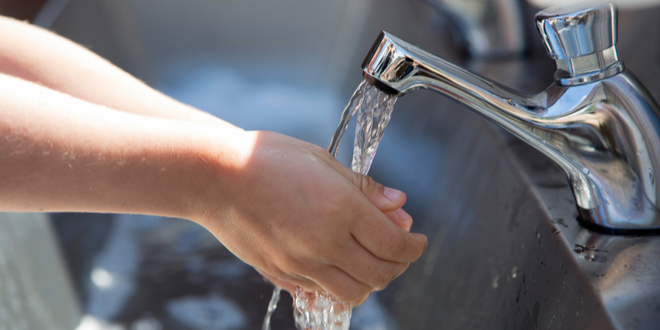Friday, the State Water Resources Control Board released its second annual Drinking Water Needs Assessment, which evaluates the overall health of drinking water systems and domestic wells across the state.
Among the report’s findings is the that over half of California’s 1,300 state small water systems (serving fewer than 25 people) and 312,000 domestic wells are at risk or potentially at risk of experiencing drinking water shortages and failing to meet water quality standards.
“Ongoing drought is challenging our state’s aspiration to deliver on its first-in-the-nation Human Right to Water legislation passed 10 years ago. Specifically, it makes the supply of safe and affordable drinking water even more precarious for smaller water systems already struggling with aging infrastructure, emerging contaminants and other threats,” said E. Joaquin Esquivel, chair of the State Water Board. “Our report’s findings reinforce the timeliness and necessity of historic federal infrastructure spending this year, and combined with the $5.2 billion in state drought and water resilience funding California
invested last year, offer us renewed hope and a generational opportunity to respond to drought and climate change by reinvesting in our water future.”
In addition to continuing last year’s examination of water resiliency for small systems and domestic wells, this latest report adds an analysis of medium-sized public water systems serving up to 100,000 people.
Additional key findings are:
- Of the 3,066 water systems analyzed (serving 15 million people), about 11% are failing, meaning they are not meeting one or more key Human Right to Water goals for providing safe, accessible or affordable drinking water and/or maintaining a sustainable water system. Nearly 17% are considered at risk of failing to meet one or more of these goals.
- Ninety-five percent of those failing are small water systems with 3,000 or fewer service connections.
- Failing water systems and at-risk domestic wells are typically located in areas with higher pollution burdens, higher poverty and serve a higher percentage of non-white customers.
- Small public water systems with up to 3,000 service connections and K-12 schools will need between $1.2 billion and $4.8 billion to meet new drought infrastructure requirements mandated by Senate Bill 552 (2021), which include well monitoring and alternate water sources and electrical supplies. This estimate does not include fire flow obligations systems must implement by 2032.
The needs assessment is part of the board’s Safe and Affordable Funding for Equity and Resilience (SAFER) Program, which deploys short and long-term strategies designed to ensure that Californians who lack safe, adequate and affordable drinking water receive it as quickly as possible and that the water systems serving them establish sustainable solutions. The program was created by the board after the
passage of Senate Bill 200 that Gov. Gavin Newsom signed into law in 2019.
 California Water News Daily Your Source For Water News in California
California Water News Daily Your Source For Water News in California


